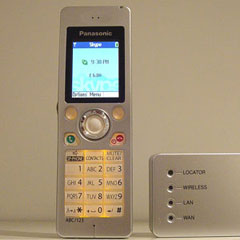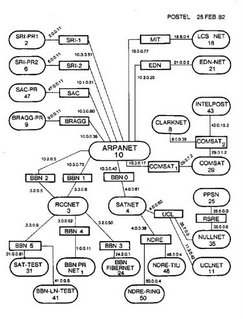CompTIA Network+ Certification Exam Tutorial
by: Chris Bryant, CCIE #12933
Passing the CompTIA Network+ certification exam and going on to become a subnetting expert is mastering the basics of IP addressing, and that means knowing the different classes, their default masks, and what these masks mean. Let’s get started!
Part of every IP address indicates the network the host is part of, and the other part identifies that particular host. You need to be able to look at an IP address and determine the network and host portions, and you do that by determining the class of the address.
Many books list only three network classes, but there are five. Since you shouldn't assign an address from the last two classes to a host, you better know what they are!
Class A networks have a beginning octet of 1 - 126.
Class B networks have a beginning octet of 128-191.
Class C networks have a beginning octet of 192 - 223.
Notice a number missing? 127 is the reserved first octet for loopback addresses, such as the 127.0.0.1 address assigned to a PC.
Class D networks are reserved for multicasting. Class D addresses begin with an octet in the 224 - 239 range.
Class E networks are reserved for "experimental use", and the first octet of these addresses is 240 - 255. Those addresses are reserved by the Internet Engineering Task Force (IETF). Neither Class D nor Class E networks should be assigned to host
devices. For exam and real-world purposes, the entire address range 224.0.0.0 - 255.255.255.255 are unacceptable for assignment to network hosts, as is any address beginning with 127.
Now, what does all this have to do with identifying the network and host portions of an address? Classes A, B, and C all have different default network masks, and it's that mask that tells you which part of an address is the network portion and
which part is the host portion.
Class A's default mask is 255.0.0.0, or /8
Class B's default mask is 255.255.0.0, or /16
Class C's default mask is 255.255.255.0, or /24.
Even if you were already familiar with these default masks, you may be wondering what that "/8" business is. This is another
way to express a network mask. It's called prefix notation, and it's much less complicated than it sounds. The number behind the slash is simply the number of consecutive ones at the beginning of the mask when it's expressed in binary.
255.0.0.0 in binary is 11111111 00000000 00000000 00000000.
255.255.0.0 in binary is 11111111 11111111 00000000 00000000.
255.255.255.0 in binary is 11111111 11111111 11111111 00000000.
When you see all the values in an octet set to 1, the value of the octet is 255. If you see an IP address with an octet set
higher than 255, it's invalid. ("256.1.1.1" literally cannot happen, so it's an invalid address.)
When you see all the values in an octet set to 1, the value of the octet is 255. If you see an IP address with an octet set higher than 255, it's invalid. ("256.1.1.1" literally cannot happen, so it's an invalid address.)
Prefix notation is the preferred way of expressing subnet masks. A mask of /8 is pronounced "slash eight", which is a lot better than saying "two-fifty-five zero zero zero". It also has less numbers to type, which I still believe is the real
reason we use it! You might not see prefix notation on your Network+ exam, but since it’s so commonly used in network documentation, you need to know it.
Now, about those network and host portions.....
The Class A network mask 255.0.0.0 means the first octet of the address is the network portion, and the final three octets are the host portion.
The Class B network mask 255.255.0.0 means the first two octets of the address are the network portion, and the final two octets are the host portion.
The Class C network mask 255.255.255.0 means the first three octets of the address are the network portion, and the final octet is the host portion.
Identifying the network or host portion of a given IP address is a two-step process:
1. Determine the address class by examining the first octet
2. Use the network mask to determine the network and host portions
Let's get a little practice with this. What is the network portion of the address 23.14.189.200?
1. The first octet falls into the Class A range
2. The network mask for Class A is 255.0.0.0, meaning that the first octet of the address is the network portion and the remaining three octets are the host portion
That's really all there is to it. The first octet, "23", is the network portion. The remaining octets, "14.189.200", comprise the host portion.
It’s just that simple to identify the network and host portions of an IP address. But what happens when we run out of IP addresses for our hosts? Find out in my next CompTIA Network Plus exam tutorial!
About The Author, Chris Bryant, CCIE #12933, is the owner of The Bryant Advantage (http://www.thebryantadvantage.com).
For his FREE seven-part course, “How To Pass The CCNA”, visit the website and sign up today! Daily free CCNA, CCNP, Network+, Security+, and A+ certification questions, too!





